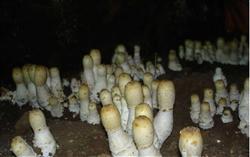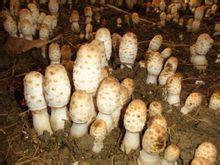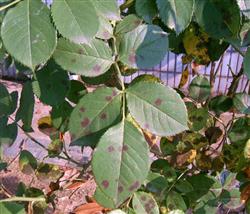Budding Management of Pleurotus ostreatus, Coprinus comatus and Agaricus blazei Murrill

1. The condition temperature for the formation of mushroom buds is 15 ℃ ~ 22 ℃, the temperature difference between day and night is 8 ℃ ~ 10 ℃, the air relative humidity is 80% ~ 90%, and maintain a certain degree of scattered light and good ventilation. After the mycelium is full, it needs to be covered with soil before it can produce mushrooms. Therefore, soil mulching and water transfer after soil mulching are more important for bud promotion. 2. The method of promoting buds in bed cultivation when the hyphae grow all over the material layer or up to the middle layer, cover the bed with 3-5 cm thick fertilizer soil, and disinfect the soil before use. After covering the soil and ventilating for 1 day, then spraying water, the method of spraying water should be taken a small number of times, that is, spray water 7 times 8 times a day, and keep its water content at 18% 20% in 3-4 days. 1% clarified lime water or tap water can be used for water transfer. The ventilation rate should be increased during the water transfer, and the ventilation rate should be reduced appropriately after the water transfer. Soil mulching and water transfer can not only provide the temperature and humidity needed for the formation of mushroom buds, but also stimulate mycelium to kink to form mushroom buds. Third, the method of bag planting and covering soil to promote bud when the mycelium is full of the bag, remove the bag film, and discharge the fungus tube on the bed bed of the mushroom field. The fungus tube is 2-3 cm apart and filled with fertile soil in the middle. When the bed bed is full, it is covered with 3-5 cm thick fertile soil. After covering the soil, spray water to adjust humidity, keep the soil water content at 18%-20%, cover with a film to keep warm and moisturize, then uncover the film every day to ventilate, spray water to maintain air humidity, and mushroom buds can be formed in 10-20 days. Fourth, the growth of mushroom buds should be given suitable conditions after the formation of mushroom buds to make them grow healthily. The temperature is kept at 10 ℃ ~ 16 ℃, the humidity is kept at 85%-90%, there is good scattered light, there is fresh air, and water is sprayed regularly to moisturize and ventilate every day. Before the mushroom bud differentiation, do not spray water directly on the mushroom bud.
- Prev

Key points of management technology of Lentinus edodes in spring
Chicken leg mushroom, also known as Maotou ghost umbrella, gets its name because its mushroom body is similar to chicken leg and its meat tastes like shredded chicken. It has high edible and medicinal value. After repeated practice, the author cultivated Coprinus comatus directly in the open field with whole straw (rice straw, wheat straw, grass, etc.) and obtained a good benefit of 150 kg mushroom produced by 100 kg hay.
- Next

How to skillfully remove the black spots of rose
Black spot is one of the most common and destructive diseases in various places. It mainly infects leaves, as well as twigs, petioles, flowers, peduncles, buds and flowers. The disease spots on the twigs are long oval at first, dark purplish red, and slightly sunken. The spots on the pedicel are smaller. When the temperature rises to about 25 ℃, the air humidity is close.
Related
- Fuxing push coffee new agricultural production and marketing class: lack of small-scale processing plants
- Jujube rice field leisure farm deep ploughing Yilan for five years to create a space for organic food and play
- Nongyu Farm-A trial of organic papaya for brave women with advanced technology
- Four points for attention in the prevention and control of diseases and insect pests of edible fungi
- How to add nutrient solution to Edible Fungi
- Is there any good way to control edible fungus mites?
- Open Inoculation Technology of Edible Fungi
- Is there any clever way to use fertilizer for edible fungus in winter?
- What agents are used to kill the pathogens of edible fungi in the mushroom shed?
- Rapid drying of Edible Fungi

